Question: what has three legs, one head, and doesn’t get out much? Answer: that big, heavy tripod that’s too much of a chore to lug around.
But it doesn’t have to be that way. Increasingly, manufacturers are coming up with cunning designs that are relatively compact and lightweight, yet extend to lofty operating heights and offer solid support even for heavyweight camera and lens combinations.
Better still, the latest tripods are often packed with intriguing features and clever tricks. It’s all good news because, even in broad daylight, a tripod can help you get sharper shots with better, more precise composition. Let’s start at the top and work downwards.
What type of head?
Every tripod needs a head, and the smart money is on ball heads. Many tripods are sold as kits, comprising legs and a head, although sometimes you’ll need to buy the legs and heads separately; you don’t have to stick with the same manufacturer for both items, but there are a couple of things to bear in mind if you want to mix and match.
The attachment screw on the tripod platform can be 1/4-inch or a larger 3/8-inch in size. You can fit a head with a larger thread to a tripod with a smaller screw, using an adaptor, but you can’t couple a head with a 1/4-inch thread to a tripod with a 3/8-inch screw.
It’s also good to check that that the diameter of the ball head’s mounting plate is roughly the same size as the mounting platform on the tripod – diameters tend to range from around 45mm to 60mm. And finally, it makes sense to get legs and a head that have a similar maximum load rating.
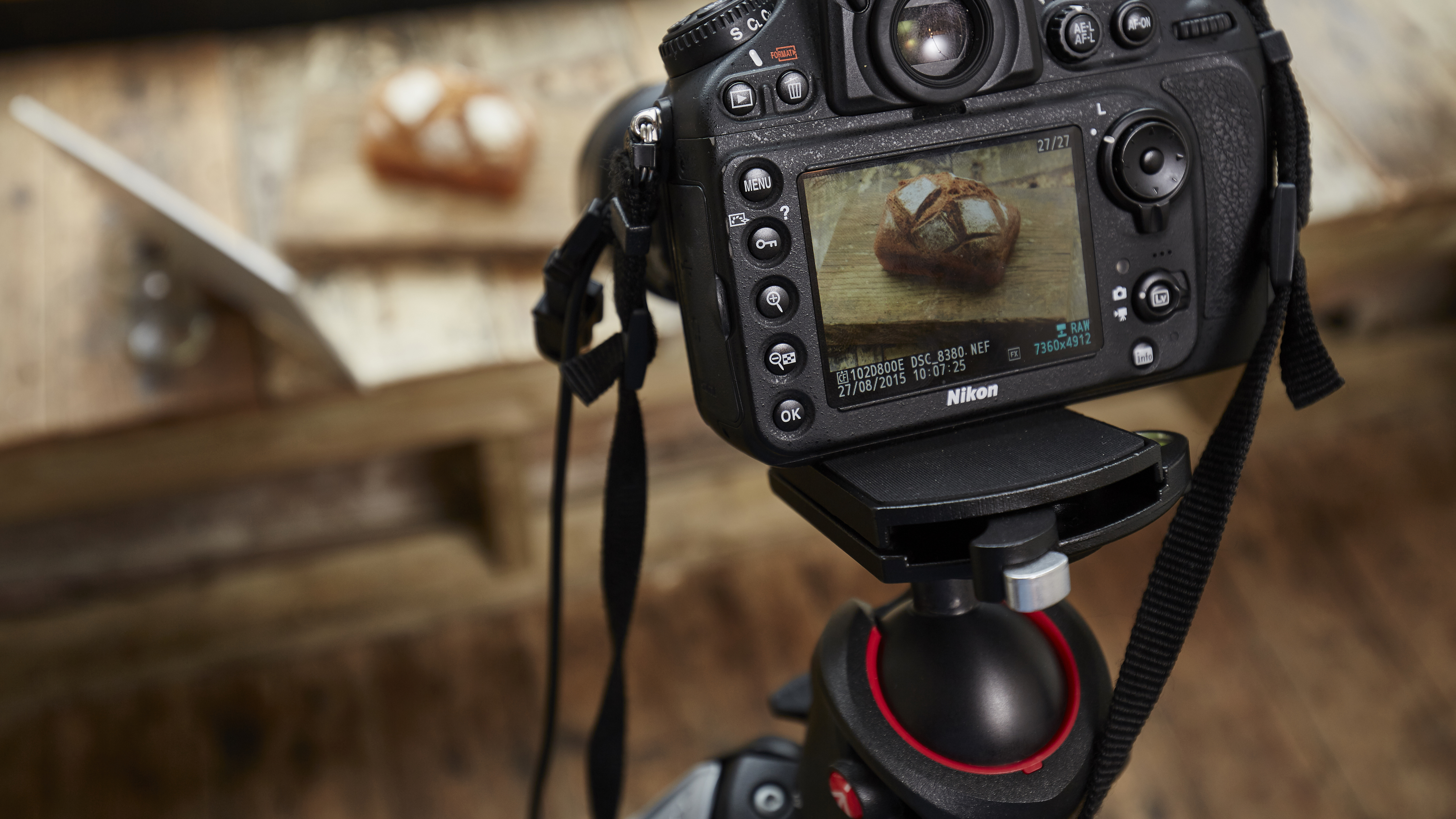
The main plus point of a ball head, compared with a traditional three-way photographic head, is that they’re much quicker and easier to set up. A single locking screw is all that’s needed to enable a full range of movement, and there are no locking arms sticking out that need to be removed for stowing the tripod away.
Drawbacks of conventional ball heads have also been addressed in many of the latest designs. For example, it’s common to find an adjustable friction damper as well as the main locking screw, so that you can tailor operation to suit your camera when fitted with lenses of wide-ranging weights. An additional pan-only release is also often fitted, so you can keep a ball head locked in position but still pan the camera to track action, or to take a sequence of shots for stitching into a panoramic image.
Low-level shooting
Moving on down, the joints at which the three legs are joined to the main chassis typically feature mechanisms with which you can lock the legs at three or more different angles. This enables low-level shooting without the need to remove and invert the center column, saving time and effort, and avoiding the need to shoot with the camera upside down. Splaying the legs further apart also adds stability in low-level shooting, and it can also be useful to use different legs at different angles on uneven terrain.
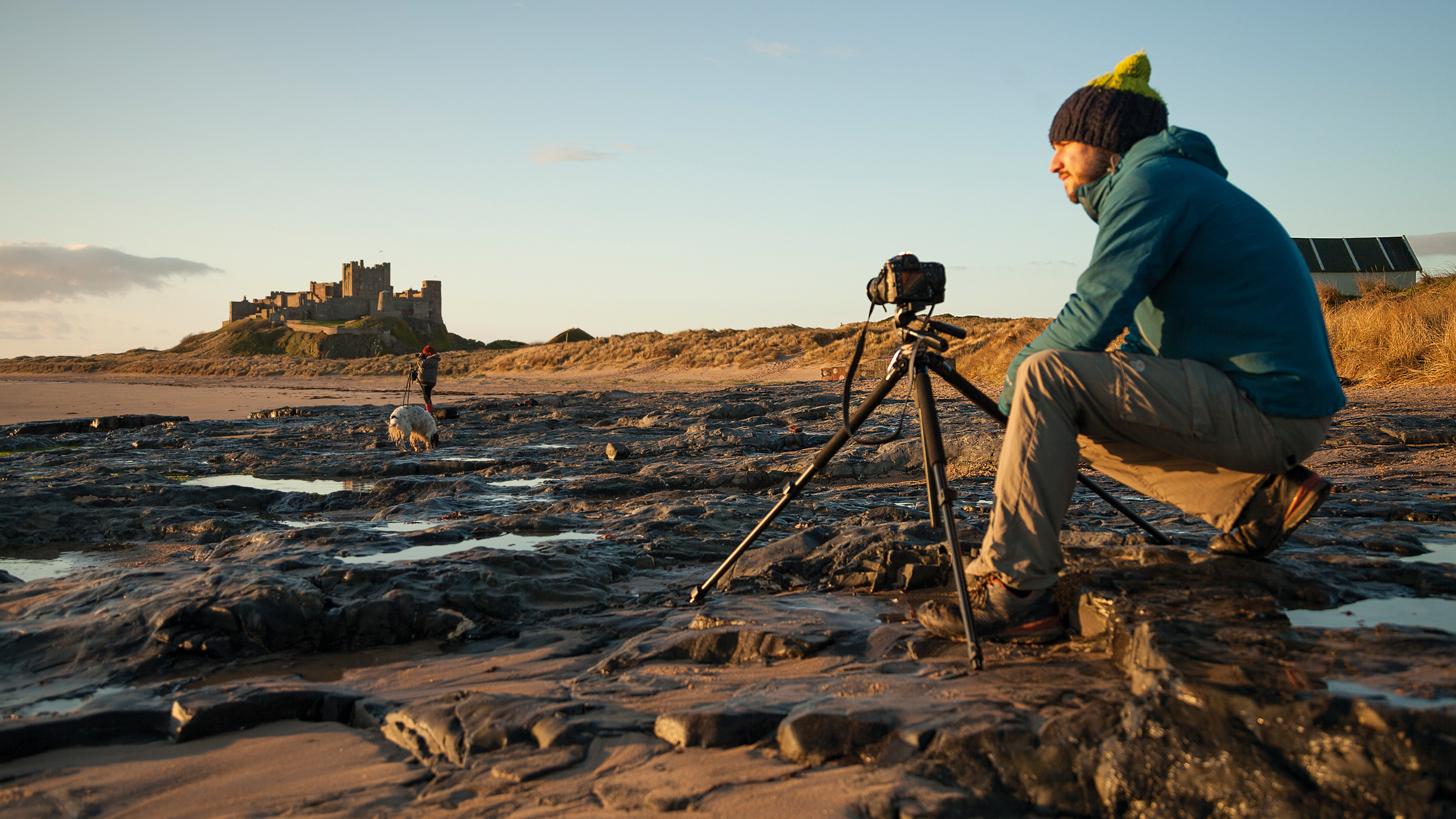
Another innovative feature often used in recent designs is a pivoting center column. With many tripods, you can pivot the center column through 90 degrees and use it as a horizontal boom. It’s great for shooting extreme close-ups with a macro lens, and helps to avoid the tripod feet sneaking into the picture if you're shooting with an ultra-wide-angle lens.
Three leg sections gives a good compromise between maximum operating height and minimum folded height
It’s also useful in conjunction with multi-angle leg locks for very low-level shooting. The pivot design in some tripods goes further still, enabling the center column to be locked at many angles in small increments through a complete 180 degree arc, instead of just in vertical or horizontal orientation.
The leg sections themselves are usually three in number. This gives a good compromise between maximum operating height and minimum folded height, as well as ensuring that the bottom sections aren’t too thin and spindly. However, ‘travel tripods’ often feature four or even five sections, so that they can fold down smaller – this can impair rigidity when you need to use the thinnest, lower leg sections, and set-up can take longer if you need to release and re-lock up to 12 separate clamps, for example, for tripods with five-section legs.
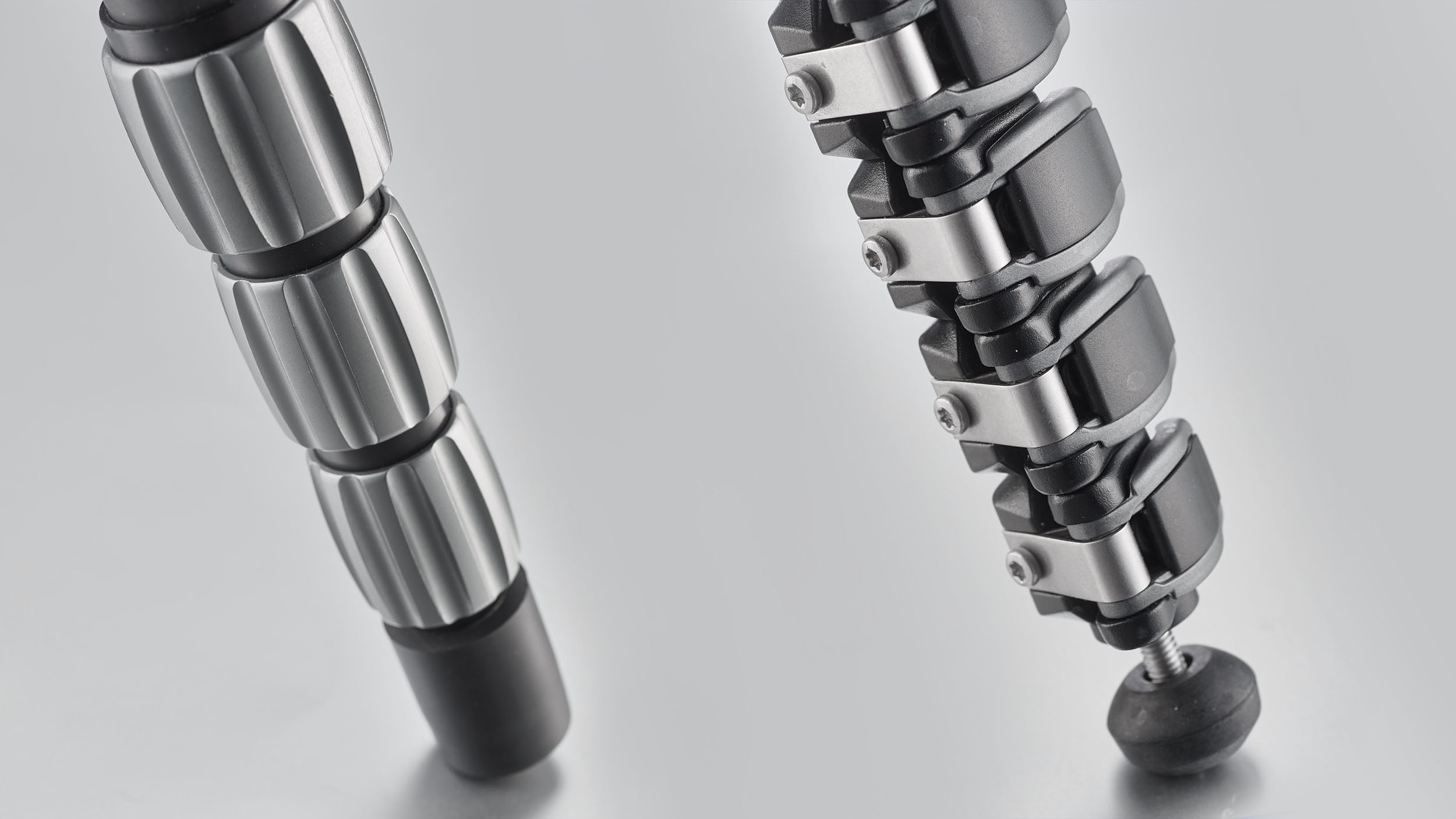
The section clamps themselves tend to be either twist-action or locking levers. Some people find twist clamps quicker and easier to operate when the legs are folded down, while others find locking levers more convenient. Locking levers became all the rage a few years ago, but twist-locks have been making a comeback.
Another space-saving idea that’s featured in an increasing number of travel-friendly tripods is that the legs swing upwards for stowage, with the head nestling between the feet. Set-up can take a little longer, but it typically knocks about 20cm off the folded height.
Down at the bottom, there are two types of feet generally on offer. Rubber pads work best on smooth, hard surfaces, whereas metal spikes are better on carpet and loose ground. Some tripods come with interchangeable feet to suit every occasion, while others might feature rubber pads with retractable spikes.
Aluminum or carbon
A material consideration is whether to go for aluminum or carbon fiber. Both are capable of providing very sturdy support but carbon fiber tripod kits (with the same heads attached) are typically about 15% lighter in weight than aluminum versions of the same kit. Naturally, the bigger the tripod, the greater the weight-saving, but it generally works out to around 500g.
Carbon legs look smart and have more of a feelgood factor, but are more susceptible to shattering if they suffer a sharp knock. And where carbon and aluminum versions of the same legs are available, the carbon edition can sometimes be as much as twice the price.
- 21 landscape photography tips you'll never want to forget
- Why every photographer needs three tripods
The type of tripod you pick will depend on your specific needs, from a simple table-top option you can sling in your bag to large, heavy-duty supports. We've picked out the 10 best options to suit a range of budgets and needs.
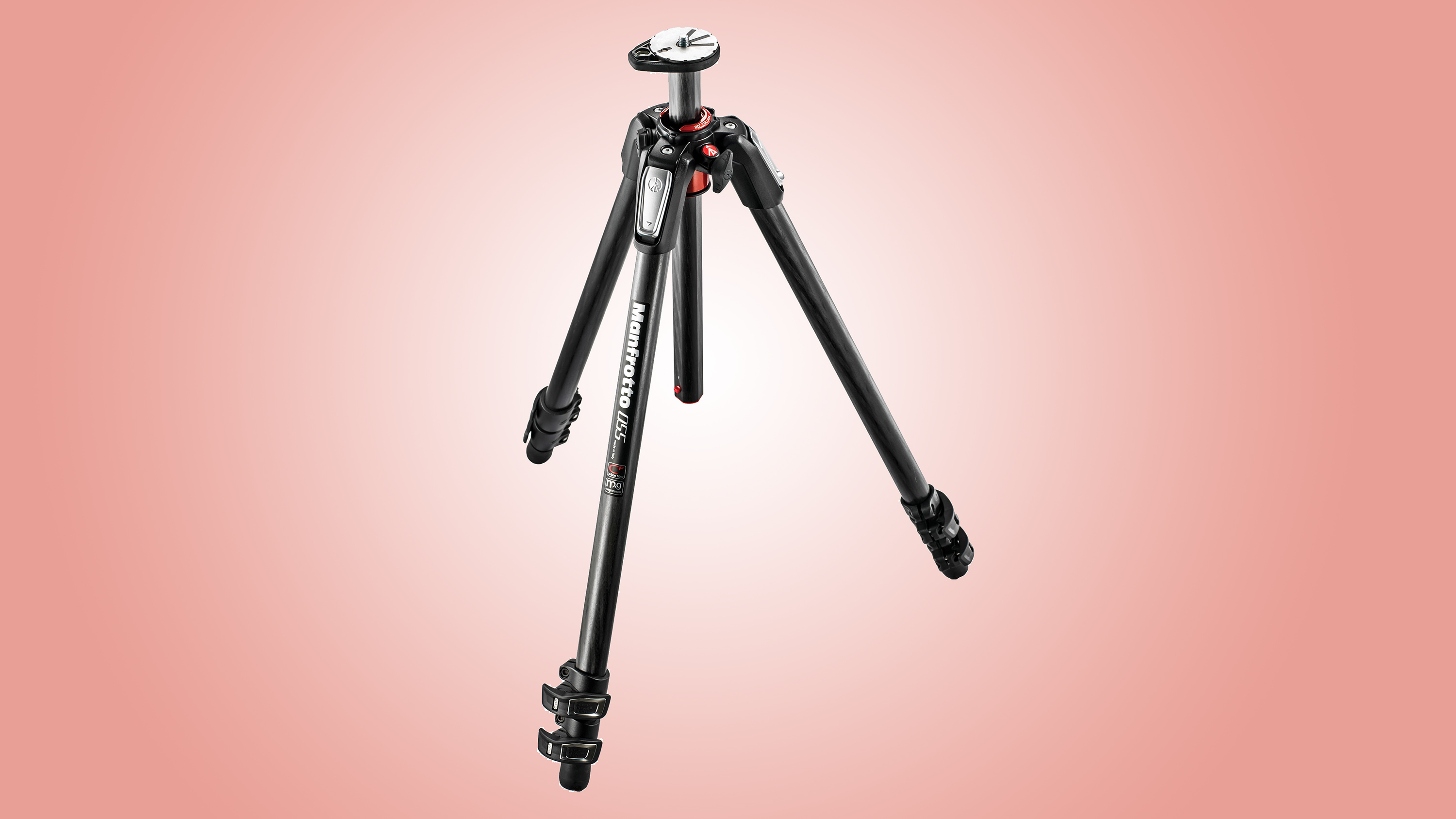
Sold separately as a set of carbon fiber legs and a magnesium alloy ball head with quick-release plate, the MT055CXPRO3 + XPRO ball head really is a winning combination from Manfrotto.
Upgrades in this latest edition of the longstanding and highly popular 055 series include easy-action ‘Quick Power Lock’ levers for the leg sections, which operate with speedy simplicity. However, in the aluminum version of the 055XPRO3 legs, which costs about half the price, the leg sections drop out a little too freely for our liking, when the clamps are released.
The mechanism for locking each leg at any of four available angles is quick and intuitive, as is the 90-degree pivot system for the center column, which enables you to use it as a horizontal boom.
The ball head is an absolute joy (sold separately), complementing the rock-solid performance of the legs and combining equally high-end build quality with smart features that include an independent friction adjuster, pan-only release and bubble levels.
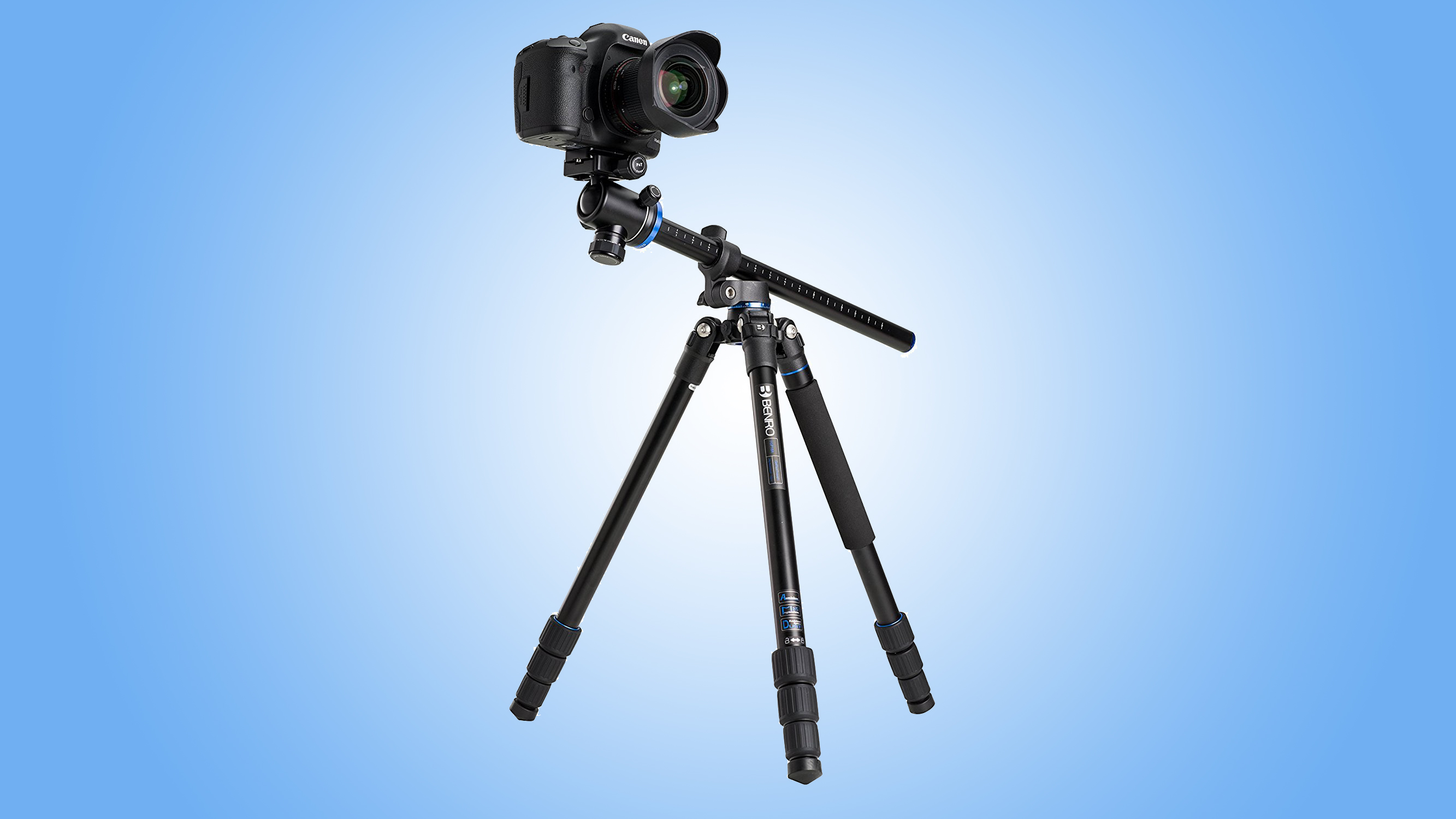
Beautifully crafted from aluminum and magnesium, the Benro GoPlus Travel FGP18A is a seriously good set of legs. A carbon fiber version is also available, but it’s more than twice the price and doesn’t add to the performance. The metal edition is the better buy, and it’s not particularly heavy at 1.95kg, including the B0 ball head (sold separately).
Despite being billed as a travel tripod, the Benro has a respectable if not overly generous maximum operating height. It also has a hefty load capacity, and is extremely rigid. Following the latest trend, the legs swing upwards around the head to enable a small carrying height of just 46cm.
Clever tricks include a pivoting center column that can be locked at angles in small increments through a full 180-degree arc, and three lockable leg angles. Bubble levels are featured on both the legs and the head, while the head itself has independent locking, panning and friction knobs.
The kit includes interchangeable screw-in spikes and rubber feet, and everything’s wrapped up in a smart padded soft case. And to save traveling with extra kit, one of the legs can be unscrewed and used as a monopod.
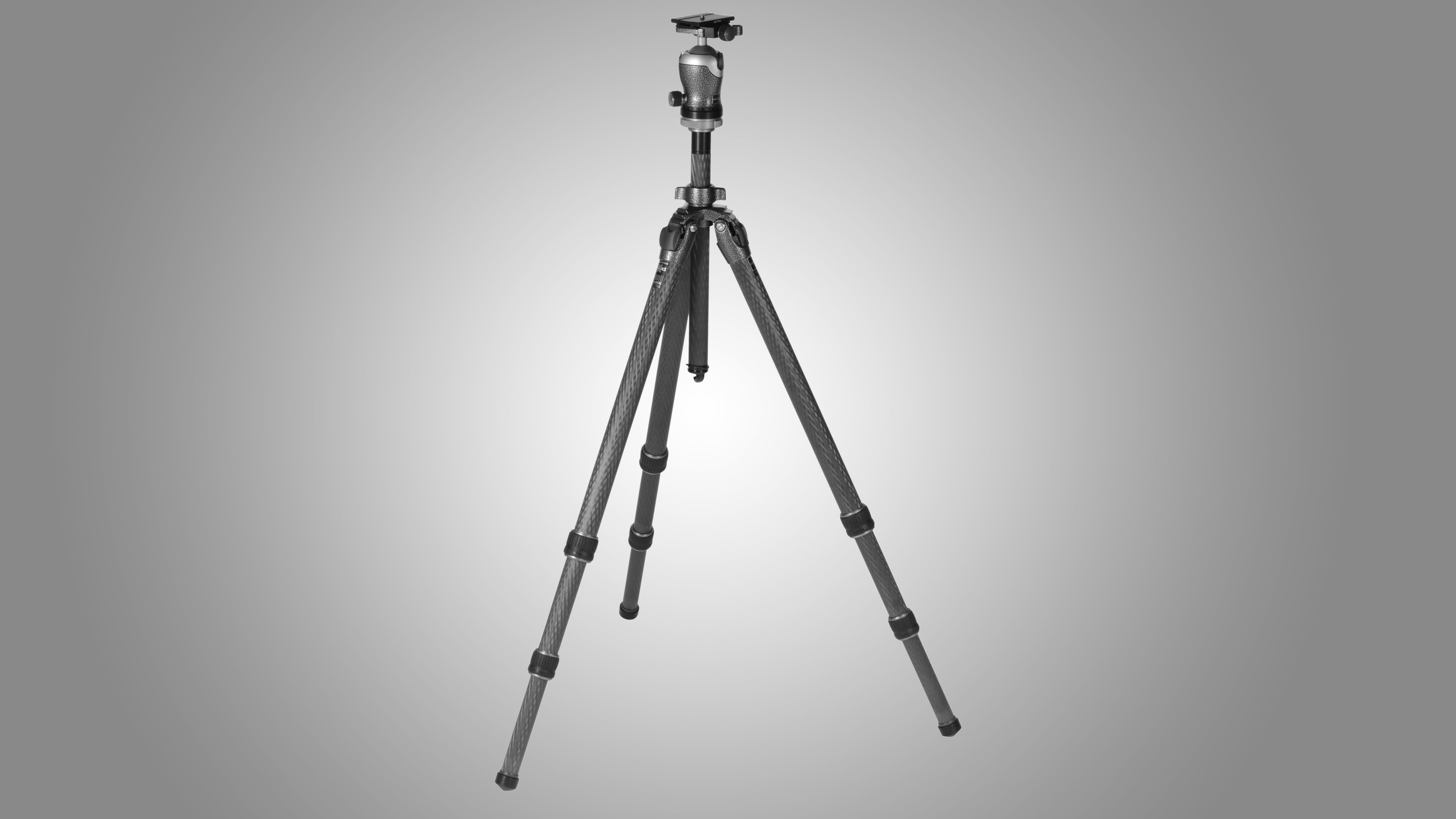
Gitzo is legendary for building super-tough, professional-grade tripods that are designed to take the knocks of harsh daily use and abuse. The company is also notorious for its high prices, and typically this GK3532-82QD kit is supplied as a robust and rugged kit of legs and head, with a hefty price tag. Not just good at heights, the Mountaineer quickly and easily adapts to low-level and even ground-level shooting.
The Series 3 is the most rigid of the Mountaineer tripods, with a massive load capacity of 21kg for the legs and 18kg for the ball head. The three-section legs are made from Gitzo’s high-performance Carbon eXact tubes, which have an optimized composition for each leg section diameter. The result is excellent rigidity at all operating heights, while revamped G-lock Ultra twist-locks operate smoothly and efficiently.
The same goes for the ball head, which includes independent friction and panning controls, plus a specialized tungsten disulphide coating to avoid any jerkiness. The original Mountaineer launched back in 1994 as the world’s first carbon fiber tripod, and this latest-edition model is a worthy successor.
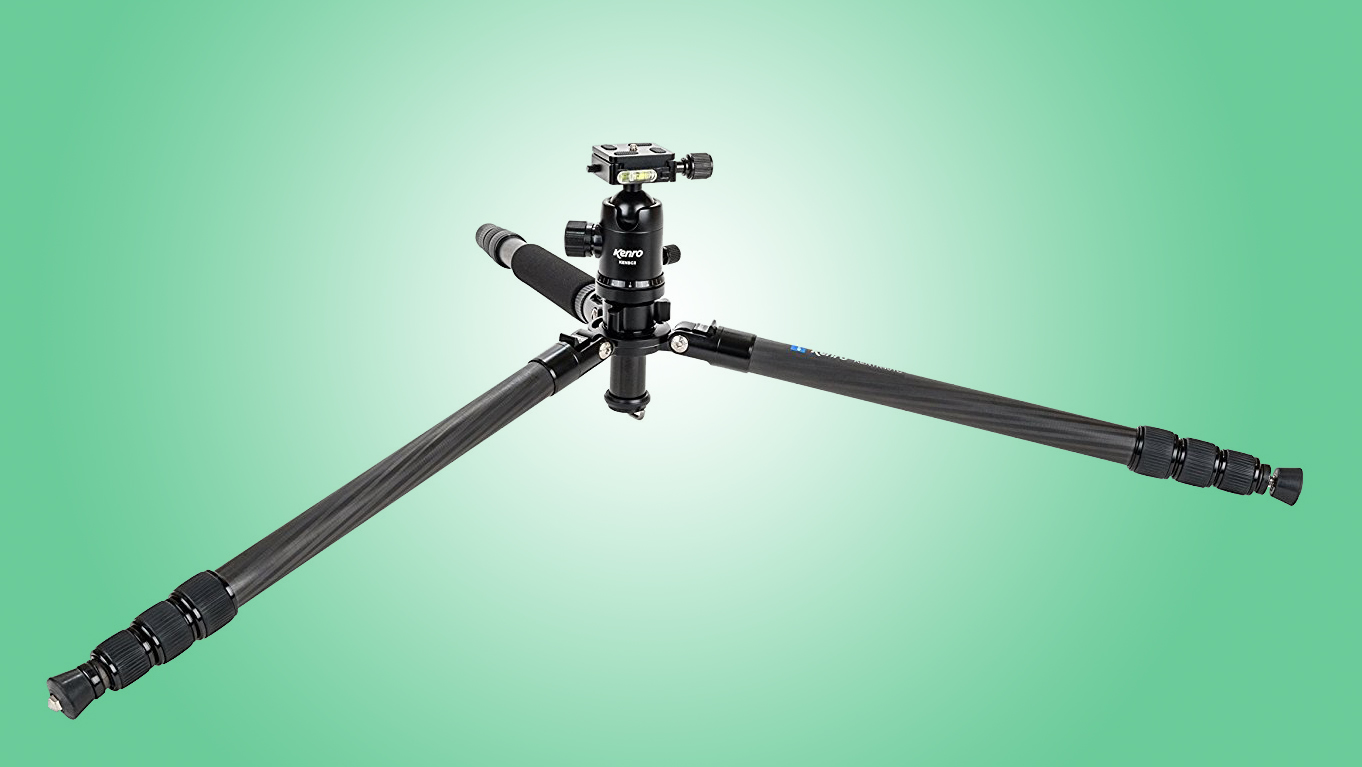
Like many tripods on the market, the Karoo Ultimate Travel Tripod Kit is available in both aluminum and carbon fiber options. However, there’s less of a mark-up than usual for carbon, making it the more attractive buy. Its name suggests that it’s the ‘ultimate travel tripod’ but, with a decent maximum height and hefty maximum load ratings, the Karoo is well suited to just about any kind of shooting, home or away.
Fairly light on its feet at 1.95kg, complete with the supplied head, the kit folds down to just 48cm, thanks to the legs swinging upwards so that the feet are positioned around the head. It’s therefore conveniently compact for carrying around, and is supplied with a posh padded soft case.
Even so, it goes large on features, with a 90-degree pivoting center column, triple-angle legs, one removable leg for use as a monopod, and retractable foot spikes. The clever head includes independent controls for locking, panning and friction adjustment.
Build quality and rigidity are very good throughout, and all aspects of operation are simple and intuitive. Overall, it’s an impressive and full-featured carbon tripod kit that’s good value at the price.

The latest in a long line of much-loved Manfrotto 190 tripods has been revamped for greater ease of use and compactness. There’s a wide range of three-section and four-section 190-series models to choose from, in both aluminum and carbon fiber, with and without supplied heads.
This complete three-section aluminum kit with XPRO ball head can’t compete with most ‘travel tripods’ for folding down to a small size, as the legs don’t swing upwards for stowage. However, set-up is quicker and the folded height is 7cm shorter than that of its predecessor, mostly thanks to a redesigned pivot joint. This enables the center column to be rotated vertically through 90 degrees for use as a horizontal boom.
The multi-angle leg mechanism is similarly streamlined and straightforward, enabling four lockable angles rather than the usual three. Up on top, the kit includes the latest XPRO ball head, which is simply superb and, unlike in most previous Manfrotto designs, includes an independent panning release. The level of build quality is up to Manfrotto’s usual high standards, and the Manfrotto MK190XPRO3-BHQ is a good compromise between rigidity and lightweight compactness, at a competitive price.
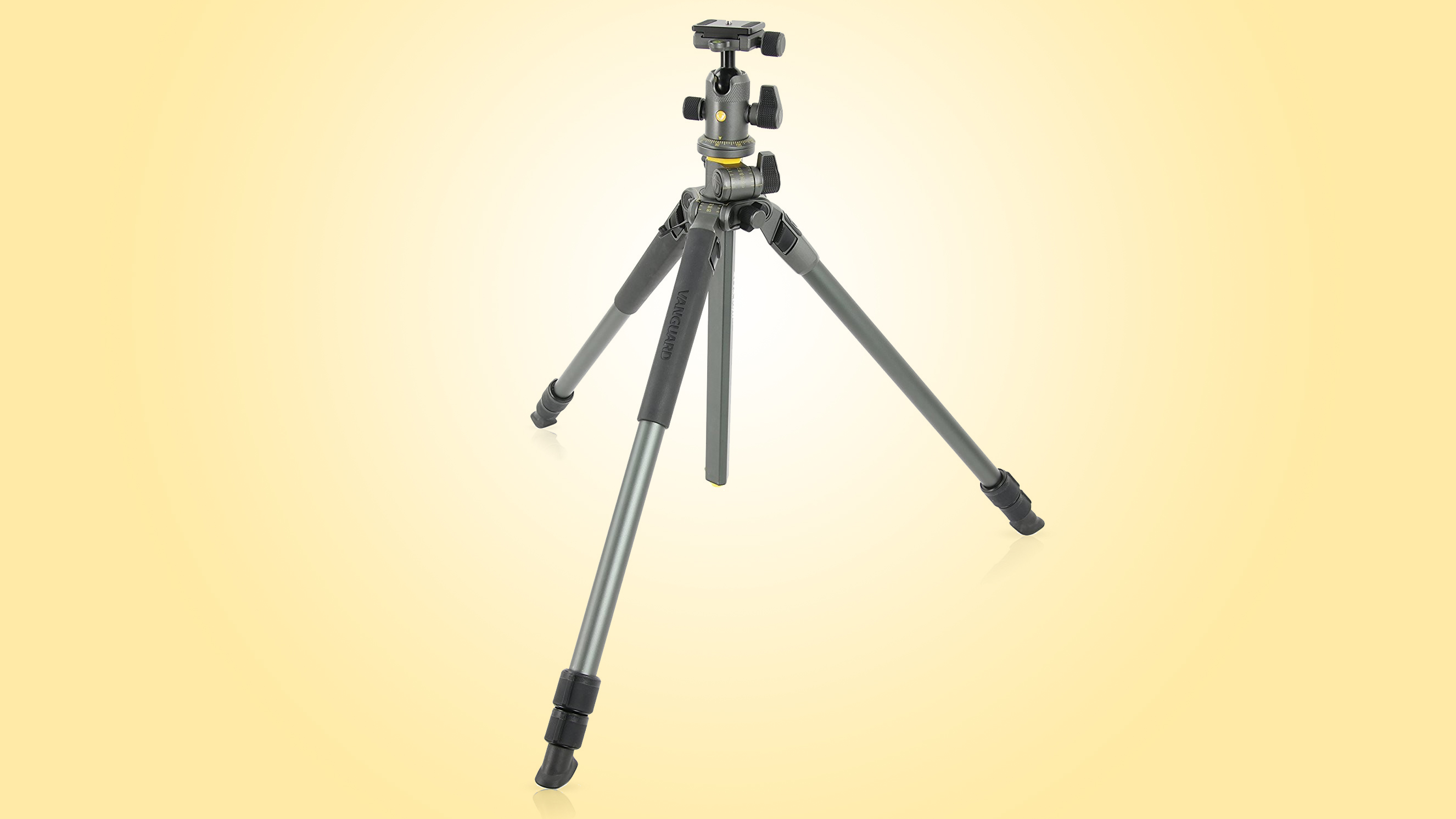
Finished in smart grey, this aluminum ‘2+’ edition of Vanguard’s ALTA PRO 263 tripod builds on the success of the original, with the flip locks for the three-section legs replaced with twist locks that are a little quicker and easier to operate.
Rigidity is very good throughout, including the hexagonal cross-section center column, which can be rotated vertically through +/- 90 degrees in small 15-degree increments. The legs can be locked at four different angles, adding further to the tripod’s versatility. An additional 3/8-inch threaded connector enables the attachment of articulated or flexible arms, ideal for adding lighting accessories for either photo or video applications.
Build quality is convincing throughout all components of the legs, and is carried through to the BH-100 ball head that’s supplied as part of the kit. This includes a friction control and dedicated panning lock, along with two bubble levels for precise positioning. The kit comes complete with a carrying bag and ‘all-terrain’ rubber feet; spiked feet are available as an optional extra.
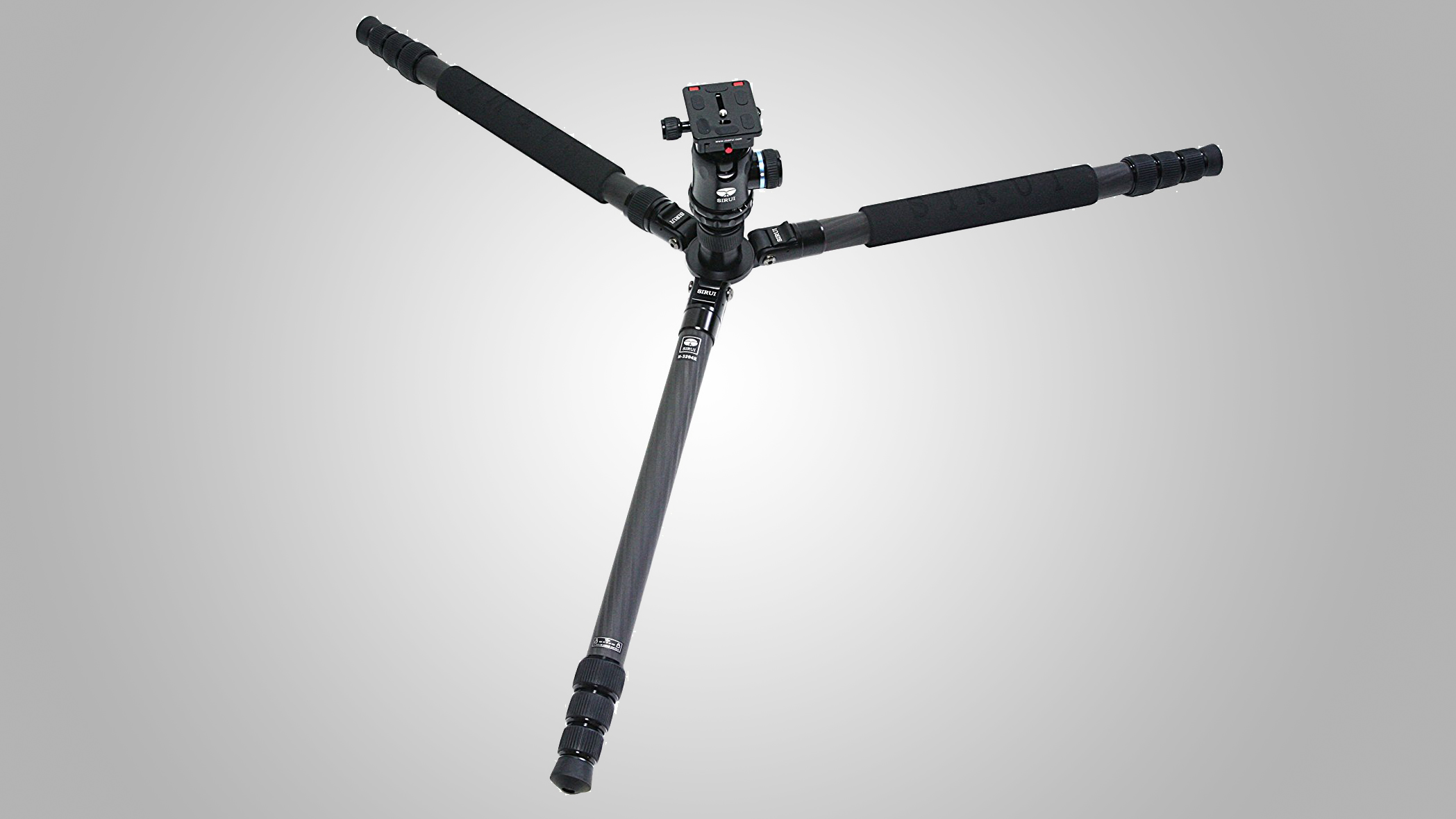
Travel-friendly compactness comes courtesy of legs that swing upwards and encompass the head, for a small stowage size, while despite folding down to just 51cm the maximum operating height is a lofty 187cm. Similarly, while this complete carbon fiber tripod kit weighs in at just 2.4kg, it has mighty maximum load ratings of 18kg for the legs and 30kg for the ball head.
Precision-engineered throughout, the tripod features some nice design flourishes as well. One of the legs can be unscrewed and used as a monopod, in conjunction with the upper part of the two-section center column.
Rigidity of the legs is excellent, while the ball head is finely crafted and works flawlessly. The head’s main locking screw doubles as an adjustable friction damper, and the pan-only release is a useful addition. Overall, the Sirui N-3204X/K-30X is a really well designed tripod kit that delivers superb performance, but at a steep price.

With no hint of flimsiness, the chunky Nest Traveller NT-6294CK carbon fiber kit has load ratings of 20kg for the legs and 15kg for the ball head. It’s beautifully made, yet undercuts many comparable aluminum kits on the market for price.
Despite its Herculean load-bearing abilities, the complete kit tips the scales at just 1.85kg. The maximum operating height is respectable for a travel-oriented tripod and, with legs that swing up over the head, the folded height is an easily manageable 45cm. One leg is removable for use as a monopod but, as with many ‘travel’ tripods, there’s no pivot mechanism for the center column.
Up on top, the ball head is a good match for the legs. It’s finished in carbon-alike grey, and features adjustable friction damping and a pan lock/release knob. The inclusion of a posh padded soft case is a surprise, given the kit’s budget-friendly price tag.
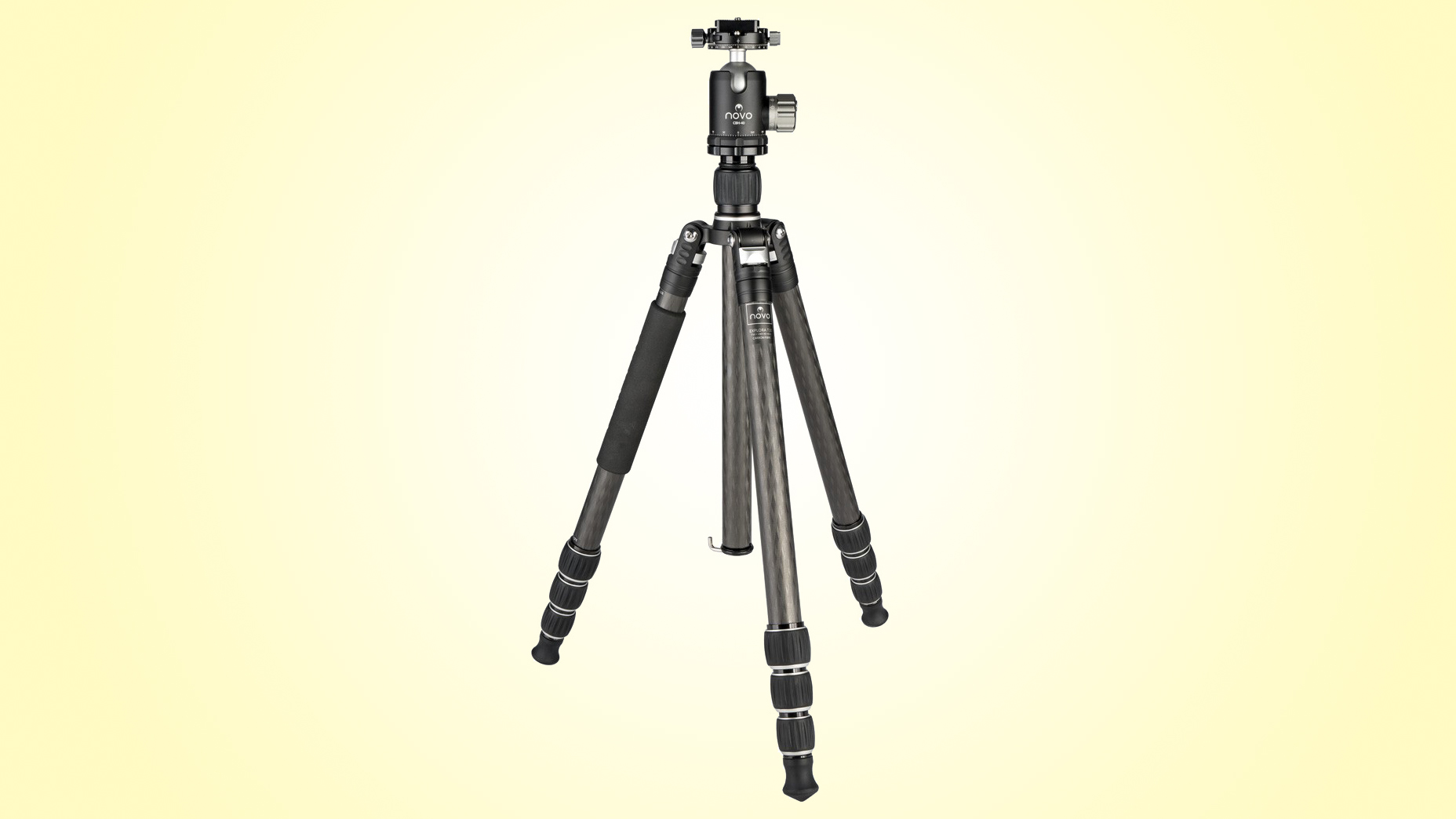
Although the word ‘travel’ doesn’t feature in the name of this tripod kit, the Novo Explora T10 nevertheless has a swing-up design for the legs, each of which has four sections, enabling a compact folded height of 48cm. Unlike many similar designs, however, there’s no skimping on the maximum operating height, which is a satisfying 174cm. The kit is only available in carbon fiber, weighing in at a modest 1.8kg yet boasting a hefty maximum load rating of 15kg, for both the legs and the ball head.
The legs feature smooth twist-action clamps and three lockable angles. As we’re seeing increasingly in recent designs, one leg is removable and can be used as a monopod. The ball head features an adjustable friction damper built into the main locking knob and two pan release locks, one at the base and another in the camera platform, both with scales marked in degrees.
The kit is supplied with interchangeable rubber feet and metal spikes, and a smart padded soft case. Overall build quality and performance are excellent, with impressive rigidity even at the maximum operating height.

It won’t quite fit in your pocket, but the MeFOTO RoadTrip Air shrinks to just 28cm when folded, and weighs barely more than a kilogram. It’s relatively painless to carry anywhere and everywhere, and is quite the fashion accessory, available in a wide selection of different colours. Even so, it stretches to a reasonable maximum operating height of 156cm, thanks to having five sections in each leg and an extending center column.
There are no external locking clamps for the leg sections. Instead, you simply hold the foot of each leg and progressively twist to release successive clamps for each section, then twist in the opposite direction to lock them. The center column has four telescopic sections that work on the same principle.
You can remove the center column and use it with the supplied smartphone holder as a selfie stick. The kit even includes a Bluetooth remote control that you can pair with your smartphone. Back in camera mode, the small ball head features an independent panning lock. Despite its ultra-lightweight construction, the tripod doesn’t feel flimsy and is reasonably resistant to flexing, although the maximum load rating of 6kg seems a little ambitious.